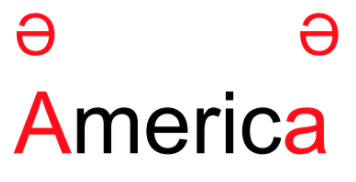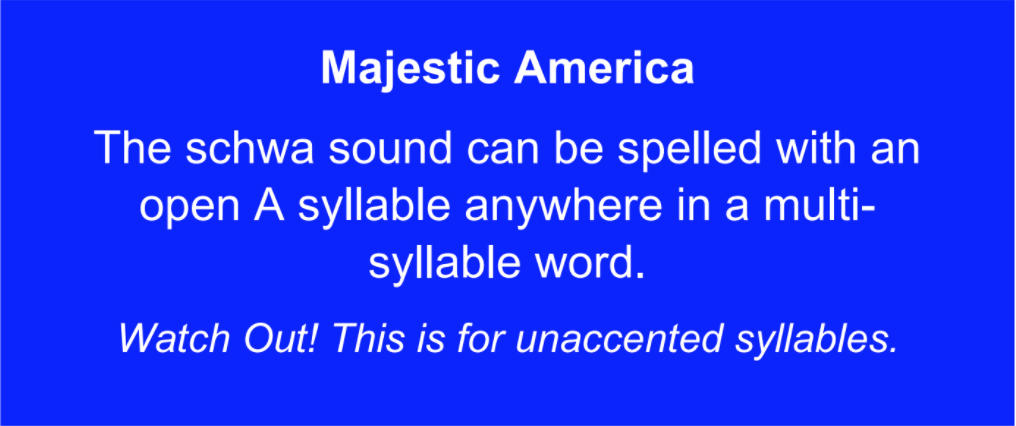As a natural English language inquirer, my friends have come to see me as the resident spelling guru of our group, so naturally, I get all the puzzling spelling questions. My most recent inquiry was, “I heard that something called schwa is the most common vowel in the English language. I thought the only vowels were ‘a, e, i, o, and u.’ What in the world is a schwa?” At this point, I asked her if she really wanted to know. I mean, I get pretty jazzed about these sorts of topics, but I wasn’t sure if she was ready for a full-blown English lesson. This schwa thing is sort of a crazy concept that takes some sorting out. Since you’re here, I’m guessing you have a bit more patience than my friend did, so today, I’ll take you through the schwa journey. Before we can begin this journey, let’s talk about prerequisite skills to teaching schwa.
Before You Begin
Getting Started: What is Schwa?
Now, in order to get you into the correct frame of mind for schwa, picture the audible sound you might make as you leave the hustle and bustle of the workplace to sit down in front of a crackling campfire or, perhaps, the beautiful scene of a glassy lake. You’re probably making that sweet sound of relaxation. “Uhhhh...” I’ll give you a visual to aid in the imagery.
 Photo by James Wheeler on Unsplash
Photo by James Wheeler on Unsplash
“Uhhhhh...” That’s exactly the sound we’re going to talk about today. You see, there’s this tricky thing that happens to the sounds of some vowels when the conditions are just right. It’s kind of like finding that perfect fishin’ hole just before it rains. It doesn’t happen all the time, but when it does, things get interesting! That situation is called a schwa. What’s a schwa? Well, it’s a special sound that certain vowels make in the right conditions. That sound is the same sound that the short letter “u” makes!
So, back to my friend’s question, “Why is schwa the most common sound in our language?” Well, the letters that can change to that schwa sound in the right conditions happen to be a, o, e, and i. And of course, ‘u’ already makes that same sound as schwa. Therefore, schwa shows up a A LOT in our language. In fact, we probably end up saying “uhhh” more than we realize! Now we know that schwa and its corresponding sound is incredibly common, but I haven’t exactly explained why it exists. Schwa happens when saying the regular vowel sound would be too much work for us to say efficiently. You see, despite its lazy sound, schwa exists so that we can speak more quickly and efficiently. Let me give you an example:
..........Say the word, “America.”
..........Now, say it again, but say each ‘a’ with the long /A/ sound instead of the schwa sound.
You might have noticed that the second way was much more difficult to say. That’s exactly why we created schwa. If we go back to the word “America,” there are two letters that changed to that schwa sound. I’m going to mark them with the schwa symbol. It looks like an upside down ‘e’ in most dictionaries.

As the most common vowel sound in the English language, schwa can appear in many different situations. We have a rule for each of these situations, but today, I’m just going to talk about one of those schwa rules. In the word above, each of the letters that changed to the schwa sound is the letter ‘a.’ That’s the first part of the rule. The second part of the rule is that they are both open syllables. This means that when the word is split into syllables, these letters are open at the end of each syllable. The final part of the rule states that they are unaccented. This means that the schwa (any schwa) cannot appear within a syllable that is accented. Every word in our language has exactly one accented syllable, and because schwa is such a lazy sound, it would rather be in an unaccented syllable. Notice that this rule will have three components to it: letter ‘a,’ open syllable, and unaccented syllable.
Note: Accented syllables will ALWAYS follow the regular spelling sounds, and they will sound exactly as they look. Accented syllables are rule followers!
Majestic America
Before I give you the complete rule, I want you to try something for me...
..........Say “Majestic America”
..........Now, divide each word into syllables. It should look something like this:
..........Ma·jes·tic A·mer·i·ca
..........Listen as you say it. Do you hear those schwa sounds? Mark the letters that make that schwa sound /uh/.
![]()
To keep things simple, the name of our rule also has clues as to how the rule works! Majestic America is no exception. In fact, our open-‘a’-schwa rule can be found three times in the name of this rule! Here’s our complete spelling rule:

Do you remember that beautiful scene we explored at the beginning of our discussion? You’ll find a similar visual on our spelling rule card as well. It serves as a reminder of the name of our rule and the overall “vibe” of schwa: a lazy and relaxed /uhhh/ sound.

To get students used to this concept, I might walk through a series of visual and auditory drills to reinforce the sound for schwa, as well as how to spot it in a word. I will give you guides for both drills in our FREE reproducibles at the end of this blog. Don’t forget that there are many more quick and easy activities in our Silver Moon Spelling Kit!
Important Tips to Consider
Before We Relax
This brings us to the end of our UH-mazing journey across America. As you settle into your comfy chairs, you can rest easy knowing that you have some great resources coming your way as you navigate schwa with your students. Click on the link below to download your reproducibles and get started!
Majestic America Reproducibles Here
As always, if you found this blog helpful, please share it with your fellow teachers, parents, and interventionists. Interested in learning more? You can find our other spelling topics HERE, and don’t forget to check out our complete guide to spelling at www.Silvermoonspellingrules.com. If you need help understanding syllable division rules see our video section (vlogs) HERE.
Happy Teaching!
Written by:
Kate Wagner, BSE
Reading Interventionist, Remote Learning Coach